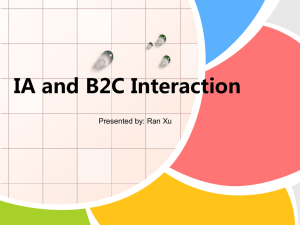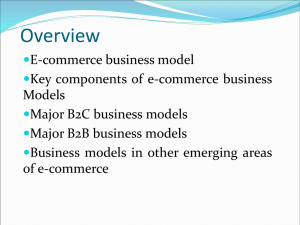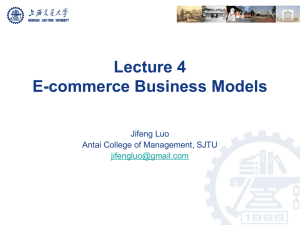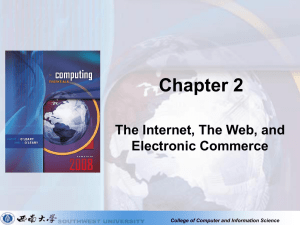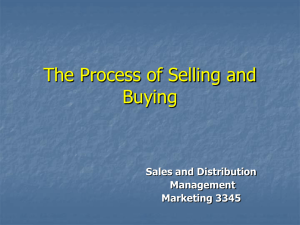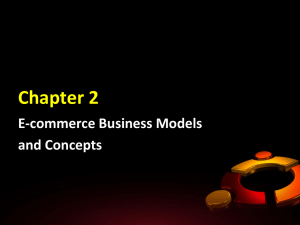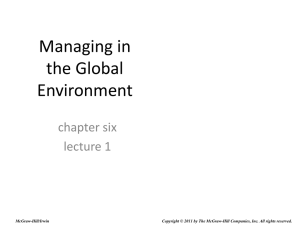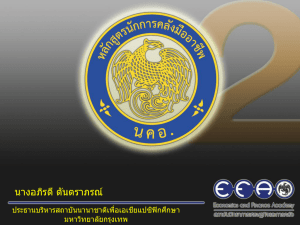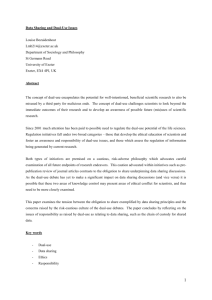WEEE 2 – Status of Transition in the EU
advertisement
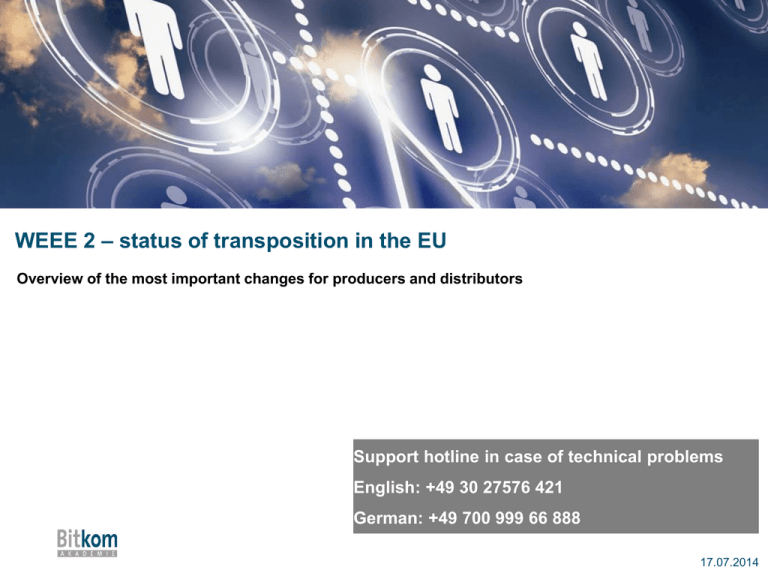
WEEE 2 – status of transposition in the EU Overview of the most important changes for producers and distributors Support hotline in case of technical problems English: +49 30 27576 421 German: +49 700 999 66 888 17.07.2014 Katrin Beisswenger Legal Counsel 1cc GmbH Sandra Harris Consultant 1cc GmbH Stefanie Kutzera Moderation Bitkom Servicegesellschaft mbH Introduction to the virtual classroom (VC) Hand raising, applause, Absence Current speaker Feedback Text chat How familiar are you with the "old" WEEE Directive? Please check here… I know the topic very well! I am familiar with the main obligations! Much is still unclear to me! The topic is completely new to me! Agenda Introduction: the WEEE-Recast 2012/19/EU Overview of the most important changes National differences in comparison Impact on manufacturers and distributors Preview Agenda Introduction: the WEEE-Recast 2012/19/EU Overview of the most important changes National differences in comparison Impact on manufacturers and distributors Preview Introduction: the WEEE-Recast - Revised version of the directive 2002/96/EG by directive 2012/19/EU - Published on August 14th 2012, Implementation deadline: 14.02.2014 - Numerous changes and adjustments, partly requires further clarifications - Only a few countries have implemented the WEEE-Recast on time; even today the legislation has not yet been transferred into national law in all countries Introduction: The WEEE-Recast status of national transposition (status: July 10, 2014) Member State has transposed directive 2012/19/EU Member State has released draft legislation/ partly transposed directive 2012/19/EU DK IR UK NL LU Member State has not pubished a draft on the transposition of directive 2012/19/EU IT Country is an EEA-Member HR BG BG PT GR MT MT Questions? Agenda Introduction: the WEEE-Recast 2012/19/EU Overview of the most important changes National differences in comparison Impact on manufacturers and distributors Preview Overview of the main changes: At a glance „old“ WEEE-Directive 2002/96/EG WEEE-Recast Directive 2012/19/EU 10 product categories „open scope“ / 6 categories „old“ producer definition „new“ producer definition 1:1 take back 1:1 + 0:1 take back - Regulation for cross-border shipments of WEEE / used EEE „old“ collection rates „new“ collection rates - Regulation of "dual use" equipment Overview of the most important changes: The product scope „old“ WEEE-Directive 2002/96/EG WEEE-Recast Directive 2012/19/EU 10 categories New product scope 1. Large household appliances 2. Small household appliances 3. IT and telecommunications equipment 4. Consumer equipment 5. Lighting equipment 6. Electrical and electronic tools 7. Toys, leisure and sports equipment 8. Medical devices 9. Monitoring and control instruments 10. Automatic dispensers Until 2018: 1.-3. identical 4. IT and telecommunications equipment + photovoltaic (PV) panels 5.-10. identical From 15. August 2018: „open scope“ and 6 categories 1. Temperature exchange equipment 2. Screens, monitors, and equipment containing screens having a surface greater than 100 cm2 3. Lamps 4. Large equipment (any external dimension greater than 50cm) 5. Small equipment (no external dimension more than 50cm) 6. Small IT and telecommunication equipment (no external dimension more than 50 cm) sowie Umkehr der Regelung zum sachlichen Anwendungsbereich Overview of the most important changes: Producer definition „old“ WEEE-Directive 2002/96/EG WEEE-Recast Directive 2012/19/EU …Manufactures and sells EEE under his own brand …is established in a Member State and manufactures EEE under his own name or trademark, or has EEE designed or manufactured and markets it under his name or trademark within the territory of that Member State; …Resells equipment from other suppliers under his own brand …is established in a Member State and resells within the territory of that Member State, under his own name or trademark, equipment produced by other suppliers; …Imports or exports professional electrical or electronic equipment into a Member State …is established in a Member State and places on the market of that Member State, on a professional basis, EEE from a third country or from another Member State; or - …sells EEE by means of distance communication directly to private households or to users other than private households in a Member State, and is established in another Member State or in a third country. Are you a producer or are you a distributor? Please tick here… I am a producer I am a distributor Overview of the most important changes: take back obligation (1) „old“ WEEE-Directive 2002/96/EG WEEE-Recast Directive 2012/19/EU In principle1:1 take back obligation for the distributor In principle1:1 take back obligation for the distributor Overview of the most important changes: Take back obligation (1) „old“ WEEE-Directive 2002/96/EG WEEE-Recast Directive 2012/19/EU - 0:1 take back obligation for the distributor for small electrical appliances: Requirement that retail space will be at least. 400m² Overview of the most important changes: Trans-border shipments „old“ WEEE-Directive 2002/96/EG WEEE-Recast Directive 2012/19/EU No regulation exists Regulation for Trans-border shipments of WEEE/ second hand EEE in Annex 6: - Trans-border shipments of used equipment allowed, only when: - Equipment is fully functional, and This can be proven according to the requirements of Annex VI Exemption from this requirement for used equipment, the (cumulative) - under an inter-company transfer agreement as defective for repair under warranty for the purpose of reuse return it to the manufacturer or a third party acting on his behalf Overview of the most important changes: Collection rates „old“ WEEE-Directive 2002/96/EG WEEE-Recast Directive 2012/19/EU Collection rate: Collection rates until December 2015: Al least. 4 kg Inhabitant / year At least. 4 kg Inhabitant / year (only B2C) Or Amount of waste that was collected on average by MS in the previous three years depending on which value is higher (only B2C) From 2016: At least. 45% of the average amount of devices put on the market in the 3 previous years (both B2B and B2C) From 2019: At least. 65% of the average amount of devices put on the market in the 3 previous years or 85 % of WEEE generated (both B2B and B2C) Overview of the most important changes: Dual-use regulation „old“ WEEE-Directive 2002/96/EG WEEE-Recast Directive 2012/19/EU No regulation for „dual use“ equipment Regulation for „dual use“ equipment Were classified in the Member States with different criteria as either B2B or B2C as. Clear assignment as B2C: Devices that can be used by both private as well as other users, are to be classified as B2C in any case. Questions? Agenda Introduction: the WEEE-Recast 2012/19/EU Overview of the most important changes National differences in comparison Impact on manufacturers and distributors Preview Comparison of National characteristics - Impact on Manufacturers and Distributors an example from Ireland, the Netherlands and UK UK Ireland Netherlands Comparison of National characteristics - Impact on Manufacturers and Distributors thresholds UK Ireland the Netherlands < 5 tons „Small Producer“ No No • No obligation to join a Compliance Scheme • Registration possible directly with the competent authority Comparison of National characteristics - Impact on Manufacturers and Distributors Photovoltaic modules UK Ireland the Netherlands Additional Category: 14 as B2C device Category: 4 as B2C device Category: 4 as B2C device Comparison of National characteristics - Impact on Manufacturers and Distributors B2B, B2C and dual-use distinction „old“ WEEE-Directive 2002/96/EG WEEE-Recast Directive 2012/19/EU B2C: Equipment from private households + devices that are similar to that from private households because of its nature or quantity B2B: Everything that does not fall under B2C Dual-use: Not defined Dual-use: Devices that can be used by both private as well as other users, are to be classified as B2C in any case Fallbeispiele - B2B, B2C und dual-use Unterscheidung UK Ireland the Netherlands until now B2B/ B2C Classification of dual-use products based on evidence B2B/ B2C Classification of dual-use products based on distribution channel B2B/ B2C Classification of dual-use products based on evidence new Guidance document under revision; new evidence possible from 2015! Dual-use products are always classified as B2C No dual-use regulation in the law! impact Producers who sell dual-use products to industrial end-users must now also report these products as B2C Producers who sell dualuse products to industrial end-users must now also report these products as B2C Pure practical interpretation according to the specification of the Directive: dual-use = B2C Authorized representative - AR „old“ WEEE-Directive 2002/96/EG WEEE-Recast Directive 2012/19/EU To appoint an authorized Article 17: inter alia Distance sellers representative was neither a possibility from other countries will need to nor obligation appoint an AR in the target country Fallbeispiele – authorized representative UK Ireland the Netherlands Until now No AR required No AR required No AR required new AR order possible for direct sales from abroad (EU + non-EU) as well as for other producers AR required for direct AR required for direct sales from EU countries sales from EU countries (not for non-EU) as well as (not for non-EU) possible in the case of takeover of obligations NOTE: Obligation also possible due to legislation in the country of origin (UK (-) IRE (+), NL (+)) impact Requirements differ from one country to another; always check the legal situation in the target country and country of origin! 28 Questions? Agenda Introduction: the WEEE-Recast 2012/19/EU Overview of the most important changes National differences in comparison Impact on manufacturers and distributors Review Summary and Review Overview of the most important To Do’s for producers and distributors: Check products within the scope Re-Check classification B2B/B2C dual-use Check labelling Monitoring of the national implementation Check Obligations for distance sellers Re-check obligations in target markets Check 0:1 Take back Summary and Review Overview of the most important To Do’s for producers and distributors: Check products within the scope Re-Check Check labelling classification B2B/B2C dual-use Monitoring of the national implementation Check Obligations for distance sellers Re-check obligations in target markets Check 0:1 Take back Summary and Review Overview of the most important To Do’s for producers and distributors: Check products within the scope Check labelling Re-Check classification B2B/B2C dual-use Monitoring of the national implementation Check Obligations for distance sellers Re-check obligations in target markets Check 0:1 Take back Summary and Review Overview of the most important To Do’s for producers and distributors: Check products within the scope Re-Check classification B2B/B2C dual-use Check labelling Monitoring of the national implementation Check Obligations for distance sellers Re-Check Obligations in target markets Check 0:1 Take back Summary and Review Overview of the most important To Do’s for producers and distributors: Check products within the scope Re-Check classification B2B/B2C dual-use Check labelling Monitoring of the national implementation Check Obligations for distance sellers Re-check obligations in target markets Check 0:1 Take back Summary and Review Overview of the most important To Do’s for producers and distributors: Check products within the scope Re-Check classification B2B/B2C dual-use Check labelling Monitoring of the national implementation Check obligations for distance seller Re-check obligations in target markets Check 0:1 Take back Summary and Review Overview of the most important To Do’s for producers and distributors: Re-Check classification B2B/B2C dual-use Check products within the scope Check labelling Monitoring of the national implementation Check Obligations for distance sellers Re-check obligations in target markets Check 0:1 Take back Your Feedback: I want to receive more information by the following means: On-Site-Event (Germany) I feel well informed. There are still a few questions left. There are a lot of questions left. Online Flyer etc. no demand Thank you for your attention Your Partners Katrin Beisswenger 1cc GmbH E-mail: k.beisswenger@1cc-consulting.com Sandra Harris 1cc GmbH E-mail: s.harris@1cc-consulting.com Tel.: +49 (0) 7031 439380 URL: www.1cc-consulting.com More information about the project www.bitkom-akademie.de

